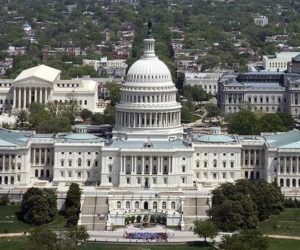This is the first of three special Guest Voice posts on the present Wall Street economic meltdown by Mikkel Fishman, a TMV reader and frequent writer in our comments section who is also an author and computer scientist.
The 2008 Economic Crisis: The Cause (Part I of III)
by Mikkel Fishman
Now that we have moved from the Little Dutch Boy part of the crisis to fundamental strategy proposals, I would like to summarize what I’ve read over the last few years on excellent financial blogs that have been talking about root causes and ramifications. (Here are the links: http://calculatedrisk.blogspot.com/, http://www.nakedcapitalism.com, http://globaleconomicanalysis.blogspot.com/, http://www.minyanville.com/, http://bigpicture.typepad.com/) I am going to write a series of three articles to start off with: the underlying cause of the problem, the possible ways forward and what to do personally to protect yourself.
If there is demand for it this might turn into a longer series that examines particular aspects in more detail, but for this series I would like to take as big of picture as possible because ultimately the way forward has to address some core issues that aren’t commonly discussed even amongst most professional economists.
The people that I’ve read that saw this coming all agree that the root problem is that there is too much debt. It’s that simple.
We can talk about mortgages versus credit cards versus government debt in future posts as each one has its own quirks and consequences, but in a way it doesn’t really matter where the debt comes from, as I’ll explain momentarily. Ever since the invention of credit, societies have dealt with credit binges that undermined their entire foundation and I am not optimistic to think that we can avoid it.
As I’m sure most people are aware, we have a fiat money system. Unlike for most of human history, our money isn’t actually representing anything physical but its value is literally dependent on how much debt we have. As time goes on and the monetary base expands, money becomes worth less and less until eventually it becomes worthless. Indeed, versus the value of gold the dollar has lost about 90% of its value since the creation of the Federal Reserve. The only reason why it potentially makes sense to have a fiat currency is that increases in productivity (through either technological or social development) make it cheaper to produce goods and raises the standard of living for all.
So even though goods cost a lot more now than they used to in absolute terms, relative to the entire monetary base they cost less. This is a key point that needs to be remembered when discussing potential solutions. The economists that back the fiat system say that being able to control the money supply ensures greater increases in productivity than having a hard backed currency, and that can be the topic of a future post.
However there is a dark side to this monetary system and that is that debt can be easily papered over with more debt. Therefore the key question becomes: is the debt being used effectively and increasing productivity, or is it merely misallocated and not providing anything useful? The best way to try to answer this question is to look at the Debt to GDP ratio. In theory, if debt is completely efficient in turning into productivity then the ratio won’t change, and the less effective it is the higher the ratio will become.
This graph astounded me the first time I saw it:

I knew that we had a lot of debt that wasn’t directly contributing to things, but never imagined that our levels were far beyond what we had right before the Great Depression.
As I will explain, this graph can basically be used to describe the underpinnings of most of the economic storylines that we have experienced in the last 30 years. I’m going to mention the general reasons for these storylines but there are many specific details and caveats that can be discussed further.
First of all, assuming at all the debt has an average rate of around 6% interest a year, this chart suggests that about 16% of the GDP is spent on interest. The interest payments on debt have to either be reinvested or saved. A large part of them go to China, Japan and Russia, which has helped them expand rapidly; although there is increasing evidence that China and Russia’s productivity hasn’t kept up with inflows and they might lose most of their gains. Ironically, many of history’s most spectacular collapses happened when a country got rich too quickly for their infrastructure, e.g. Spain’s collapse from a sudden influx of New World gold.
A large portion goes to citizens and companies in the U.S. or people that invest in the U.S. Even if this amount is only a fraction of the interest payments, it is far more money than our advanced economy can use to increase productivity. In fact research suggests that the maximum productivity that can be gained over long time periods is around 3% a year even at optimal economic efficiency. Greenspan has said that this is the bane of all economic modelers and policy makers because it suggests that too rapid of growth is guaranteed to be misallocated but alas, there is no direct measurement to tell which investments are productive. What looks like real wealth gains might be temporary, or it might be long term prosperity, but this can only be known in hindsight.
Because there is too much money to use efficiently, this means that the only two options are to save the money or to try to find a niche investment. People do not want to save because of inflation (especially because government policy has been to have negative real interest rates on savings accounts and many bonds), so they opt for the latter option and this is what leads to bubbles. Whether it’s bubbles in the stock market or commodities or real estate, the fundamental reason is that too much money is chasing too few assets and this creates a feedback loop. Normally bubbles happen in assets that are historically undervalued by a large amount and the very fast appreciation back to historical norms creates greed and euphoria in those that weren’t in at the bottom. This image (http://tuttleassetmanagement.com/media/media/Dow-Cht-Flt-Str-021508-1150.gif not included because I’m uncertain about copyright) shows how the stock market goes from periods of extreme undervalue to overvalue (as shown in the P/E ratio at the bottom) over many years.
Ironically, these bubbles that are products of too much money fuel even more debt creation. This is because people that greed leads to an increase in leverage (literally taking loans for the purpose of investing and making more money than otherwise possible) and taking large risks in “sure bets.” This is a reason why there is a huge jump in the Debt to GDP chart in the mid-90s, coincident with bubble formation.
The increasing wealth disparity is also a function of the amount of debt we have. It’s a given that the wealthy are going to be creditors, and so interest payments are going to naturally concentrate the wealth more in the upper class. Bubbles just exacerbate this change, as the wealthy are normally the first in and out of an asset class.
Now I mentioned earlier that if debt is completely efficient then the Debt to GDP shouldn’t increase. This is actually a bit simplistic, because debt is created all at once, and paid back over many years. This means the rate of Debt to GDP increase is highly important as well. It is simplistic (but pretty accurate) to say that as long as the rate of productivity increases at the same pace or faster as the debt load, the standard of living will increase. In fact my estimate from the chart is that from 1947-1997, the rate of change was just about 2.5% and for the most part, the standard of living increased the majority of the time. This is especially true if you look at wage buying power, as most increases during the late 90s and this decade were asset increase oriented as opposed to wage oriented.
However, since then there has been nearly a 5% increase, which is way above the theoretical limit of 3% productivity increase. This explains in part why it’s becoming so hard to keep up with rising prices in food, energy, health care and education. The amount of money in the world is expanding more rapidly than our economy can innovate, and people are loathe to save, so the price for goods is rising faster than wages.
This decrease in standard of living and the collapse of a bubble in something that is more permanent than stocks has finally caught up to us and is the root of the immediate crisis. The consensus is to have the government step in and reenergize lending (i.e. continue to increase debt) and stop the current collapse. However, this will just lead to an even greater percentage of productivity going towards interest payments, create larger bubbles and degrade the standard of living for average Americans even more.
So far I’ve been referring solely to productivity, but that is because it is the lynchpin of the value of money. In more literal terms there is too much debt for the amount of money. There are two ways forward: inflate the monetary supply or deflate the debt. In my next post I will discuss these two approaches, the pros/cons of each and point to some historical events. While many people focus on money exclusively, the consequences of both inflation and deflation are directly related to productivity, so it’s important to understand my argument in this post before moving on to read the next.
The author is a computer scientist and self styled philosopher of science with a primary interest in applying and improving dynamic systems theory to fields of study where it is not traditionally used, as well as creating tools that will eventually lead to mass adoption of the techniques. He lives in Cleveland because of its beautiful weather and scenery.
Joe Gandelman is a former fulltime journalist who freelanced in India, Spain, Bangladesh and Cypress writing for publications such as the Christian Science Monitor and Newsweek. He also did radio reports from Madrid for NPR’s All Things Considered. He has worked on two U.S. newspapers and quit the news biz in 1990 to go into entertainment. He also has written for The Week and several online publications, did a column for Cagle Cartoons Syndicate and has appeared on CNN.
















